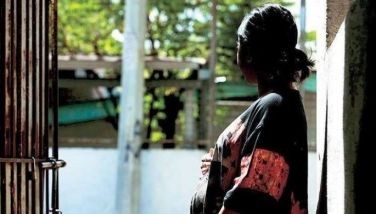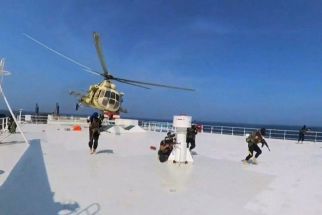Phivolcs proposes tsunami warning system
January 9, 2005 | 12:00am
In the matter of making warnings, time is of the essence.
The Philippine Institute of Volcanology and Seismology (Phivolcs) is now pushing for a "real-time" link-up of all its earthquake monitoring stations across the country for more effective tsunami warning.
"What we need is a real-time link-up of these stations with the main office. We need to find the technology to link these all up," Philvolcs director Renato Solidum said at yesterday’s Kapihan sa Sulo Hotel forum.
According to Solidum, Phivolcs has seismic monitoring stations in Batanes, Zamboanga, Davao, Roxas, Antique and Aklan and unmanned stations in Guimaras, Puerto Galera in Mindoro and Puerto Princesa in Palawan. The unmanned stations are linked to the Phivolcs main office by satellite, he said.
He said Philvolcs may ask the Department of Science and Technology (DOST) for additional funding for its link-up project.
Meanwhile, Phivolcs will also be intensifying its tsunami awareness education program, particularly in the wake of the tsunami that hit southern Asia and left hundreds of thousands dead or missing and ravaged the countries sitting on the rim of the Indian Ocean.
"We are now intensifying our tsunami awareness program especially for those living in coastal barangays," Solidum said.
He said it is important that residents of coastal communities be made aware of what to do when a tsunami strikes. He said this is important because not even cutting-edge technology will provide sufficient time to warn and evacuate residents of coastal communities should tsunamis again batter Philippine shores.
"If a tsunami happens in the middle of the Pacific Ocean, we can be effectively warned about it from monitoring stations in Hawaii. The existing technology we have cannot shorten the lead time (for warning). We need to educate the people," said Solidum.
Phivolcs has allotted P3 million of its P25 million funding for the printing and distribution of tsunami awareness and warning posters. These posters will be distributed to coastal communities that could be hit by tsunamis.
Solidum said residents of coastal communities should evacuate to higher ground as soon as natural tsunami warning signs become evident - such as a strong earthquake and a sudden and visible drop in the sea level.
Phivolcs said trenches and fault lines surround the Philippines. These trenches and fault lines can generate earthquakes that could trigger killer tsunamis.
Solidum said records show that tsunamis have hit the Philippines on several occasions. He added that many of these tsunamis were weak but noticeable.
The east and west coasts of the country, including west Luzon, east Luzon, and southeast Mindanao are considered by Phivolcs as areas most likely to be hit by tsunamis because of the presence of trenches and fault lines. To the east of the Philippines is the Marianas trench, which, plunging to a depth of 11 kilometers, is the deepest trench in the world. This trench marks the spot where the swift moving Pacific Plate converges with the slower-moving Philippine Plate.
On Aug. 16, 1976, the Moro Gulf earthquake produced tsunamis that devastated the southwest coast of Mindanao and left more than 3,000 people dead and at least 8,000 people injured. The Moro Gulf earthquake produced five-meter-high waves that left 12,000 people homeless.
In another development, the Department of Foreign Affairs (DFA) yesterday advised families of dead and missing Filipino tsunami victims in Phuket not to go to Thailand, citing possible health risks.
A Filipino forensic team led by Dr. Idabel Pagulayan is in Thailand helping to identify the dead.
The Thai government has asked the Philippine embassy in Bangkok to advise the victims’ next of kin not to go to Thailand to search for their loved ones even as the task of recovering the dead continues.
Pagulayan said that the Filipino forensic team, which has joined the 300-strong multinational Disaster Victim Identification Team, are there to collect DNA samples, which will be used to identify the victims and any Filipino fatalities who may be among the recovered dead in Thailand’s disaster zone.
The Thai government said huge numbers of volunteers are already working in the disaster area and added that the unburied dead bodies have increased the risk of disease and other health risks which are now a critical concern there. — With Pia Lee Brago
The Philippine Institute of Volcanology and Seismology (Phivolcs) is now pushing for a "real-time" link-up of all its earthquake monitoring stations across the country for more effective tsunami warning.
"What we need is a real-time link-up of these stations with the main office. We need to find the technology to link these all up," Philvolcs director Renato Solidum said at yesterday’s Kapihan sa Sulo Hotel forum.
According to Solidum, Phivolcs has seismic monitoring stations in Batanes, Zamboanga, Davao, Roxas, Antique and Aklan and unmanned stations in Guimaras, Puerto Galera in Mindoro and Puerto Princesa in Palawan. The unmanned stations are linked to the Phivolcs main office by satellite, he said.
He said Philvolcs may ask the Department of Science and Technology (DOST) for additional funding for its link-up project.
Meanwhile, Phivolcs will also be intensifying its tsunami awareness education program, particularly in the wake of the tsunami that hit southern Asia and left hundreds of thousands dead or missing and ravaged the countries sitting on the rim of the Indian Ocean.
"We are now intensifying our tsunami awareness program especially for those living in coastal barangays," Solidum said.
He said it is important that residents of coastal communities be made aware of what to do when a tsunami strikes. He said this is important because not even cutting-edge technology will provide sufficient time to warn and evacuate residents of coastal communities should tsunamis again batter Philippine shores.
"If a tsunami happens in the middle of the Pacific Ocean, we can be effectively warned about it from monitoring stations in Hawaii. The existing technology we have cannot shorten the lead time (for warning). We need to educate the people," said Solidum.
Phivolcs has allotted P3 million of its P25 million funding for the printing and distribution of tsunami awareness and warning posters. These posters will be distributed to coastal communities that could be hit by tsunamis.
Solidum said residents of coastal communities should evacuate to higher ground as soon as natural tsunami warning signs become evident - such as a strong earthquake and a sudden and visible drop in the sea level.
Phivolcs said trenches and fault lines surround the Philippines. These trenches and fault lines can generate earthquakes that could trigger killer tsunamis.
Solidum said records show that tsunamis have hit the Philippines on several occasions. He added that many of these tsunamis were weak but noticeable.
The east and west coasts of the country, including west Luzon, east Luzon, and southeast Mindanao are considered by Phivolcs as areas most likely to be hit by tsunamis because of the presence of trenches and fault lines. To the east of the Philippines is the Marianas trench, which, plunging to a depth of 11 kilometers, is the deepest trench in the world. This trench marks the spot where the swift moving Pacific Plate converges with the slower-moving Philippine Plate.
On Aug. 16, 1976, the Moro Gulf earthquake produced tsunamis that devastated the southwest coast of Mindanao and left more than 3,000 people dead and at least 8,000 people injured. The Moro Gulf earthquake produced five-meter-high waves that left 12,000 people homeless.
In another development, the Department of Foreign Affairs (DFA) yesterday advised families of dead and missing Filipino tsunami victims in Phuket not to go to Thailand, citing possible health risks.
A Filipino forensic team led by Dr. Idabel Pagulayan is in Thailand helping to identify the dead.
The Thai government has asked the Philippine embassy in Bangkok to advise the victims’ next of kin not to go to Thailand to search for their loved ones even as the task of recovering the dead continues.
Pagulayan said that the Filipino forensic team, which has joined the 300-strong multinational Disaster Victim Identification Team, are there to collect DNA samples, which will be used to identify the victims and any Filipino fatalities who may be among the recovered dead in Thailand’s disaster zone.
The Thai government said huge numbers of volunteers are already working in the disaster area and added that the unburied dead bodies have increased the risk of disease and other health risks which are now a critical concern there. — With Pia Lee Brago
BrandSpace Articles
<
>
- Latest
- Trending
Trending
Latest
Trending
Latest
Recommended































